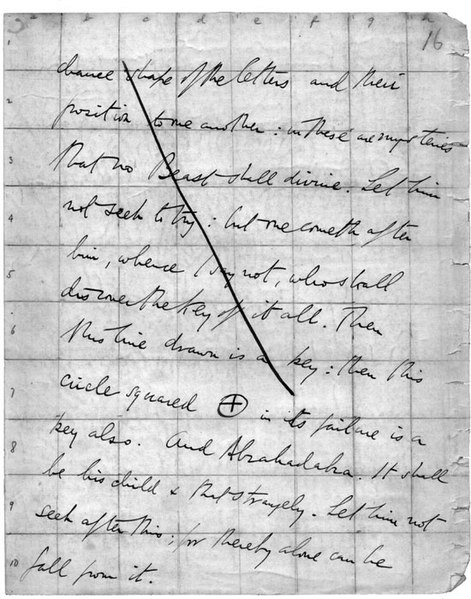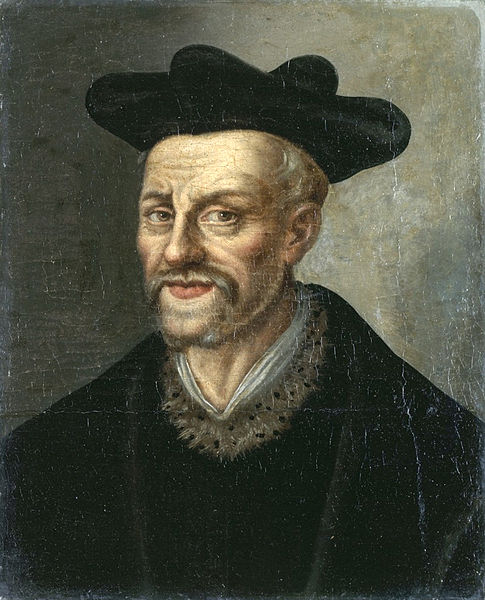Liber AL vel Legis, commonly known as The Book of the Law, is the central sacred text of Thelema. Aleister Crowley said that it was dictated to him by a beyond-human being who called himself 'Aiwass'. Rose Edith Kelly, Crowley's wife, wrote two phrases in the manuscript. The three chapters of the book are spoken by the deities Nuit, Hadit, and Ra-Hoor-Khuit.
The Stele of Revealing (Bulaq 666): Nuit, Hadit as the winged solar disk, Ra-Hoor-Khuit seated on his throne, and the stele's owner, Ankh-af-na-khonsu
The mysterious 'grid' page of Liber AL's manuscript. "for in the chance shape of the letters and their position to one another: in these are mysteries that no Beast shall divine. ... Then this line drawn is a key: then this circle squared in its failure is a key also. And Abrahadabra."
The Book of the Law as published in ΘΕΛΗΜΑ (1909)
Thelema is a Western esoteric and occult social or spiritual philosophy, as well as a new religious movement that was founded in the early 1900s by Aleister Crowley (1875–1947), an English writer, mystic, occultist, and ceremonial magician. Central to Thelema is the idea of discovering and following one's True Will, a unique purpose and calling that goes beyond ordinary desires. Crowley's system begins with The Book of the Law, a text he said was dictated to him by a non-corporeal entity named Aiwass. This foundational work lays out key principles, including the central axiom "Do what thou wilt shall be the whole of the Law". This principle emphasizes personal freedom and the pursuit of one's true path, while being guided by love and finding one's authentic purpose.
François Rabelais
Portrait of Francis Dashwood, 11th Baron le Despencer, by William Hogarth from the late 1750s
The Stèle of Revealing [front] depicting Nuit, Hadit as the winged globe, Ra-Hoor-Khuit seated on his throne, and the creator of the Stèle, the scribe Ankh-af-na-khonsu
Parsons in 1941






